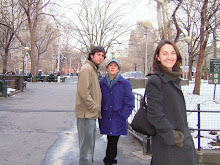Sitting together in the Jardin des Tulieries with a bottle of wine, a wedge of brie, and dark chocolate watching the sun set and the Eiffel Tower twinkle. It's after 9 pm and still light, people are running, pushing toddlers, kissing, chatting. Paris is wonderful.
We took the subway RER from the airport to our amazing hotel (Wow, thanks Papa Wong) took a real shower, and walked along the Seine to the Eiffel tower. We are probably the only people in the hotel drinking out of nalgenes and carrying a clothesline. And made ourselves more presentable by changing out of hiking shoes and underarmour. We met up with Andrew's friend, Jack, who manages Fat Tire biking tour company (where fellow PCV and friend Jay spent a summer leading Paris city tours). Hi boJackson! Jack generously let us join an afternoon bike tour through the streets of Paris as his treat. A little French history and a little exercise. It was a perfect introduction to the city.
Narrow cobblestone streets, old charming buildings, a river, parks, people interacting outdoors, open restaurants with sidewalk seating, produce markets... it's all so beautiful and romantic. The selection of fresh and deeply colorful fruits and vegetables are caringly displayed. As we rode our bikes through the streets, scents of lavendar, then baking bread, warm cheese, and cherries filled the air. We enthusiastically explored a grocery store for picnic foods and almost cried - either from being overwhelmed with choices or happiness, we aren't sure - and then walked through backstreets to the hotel. After dark we wandered through a Coney Island-like carnival with the neon lights, game stands, and ferris wheel. Kristin had some fresh spun cotton candy.
